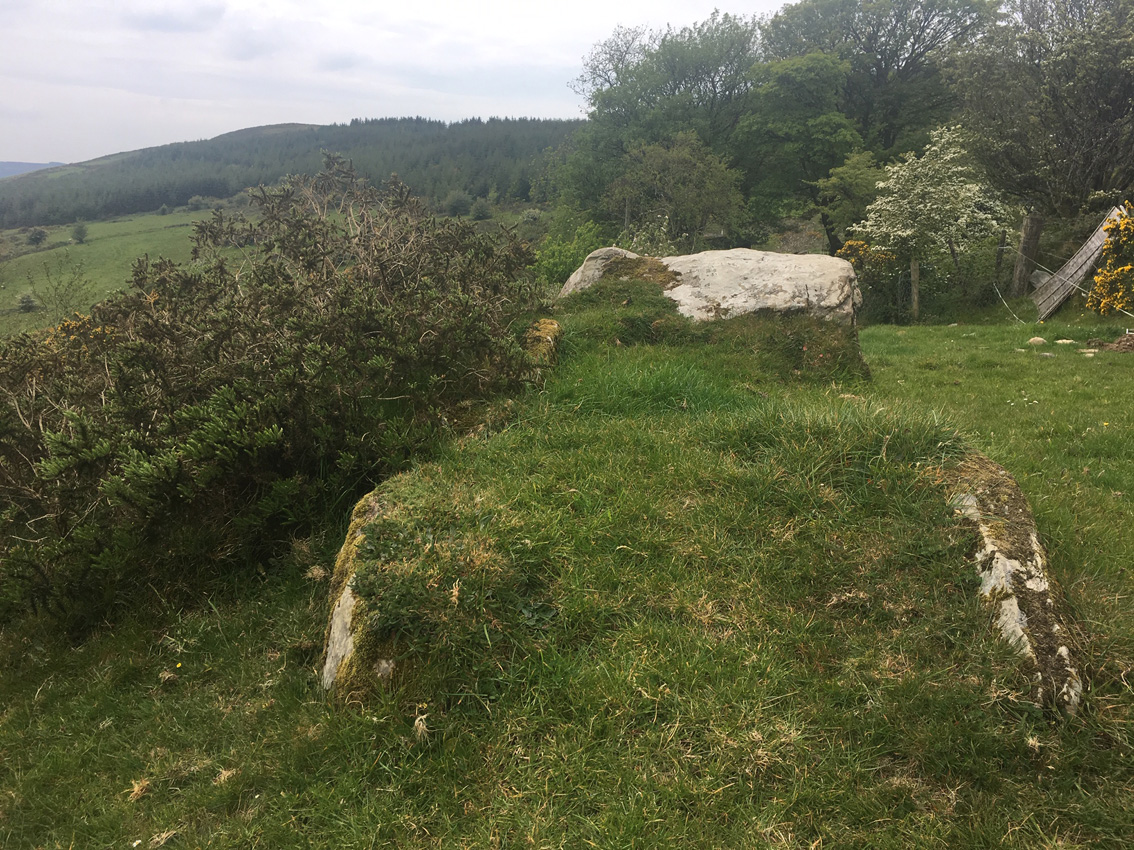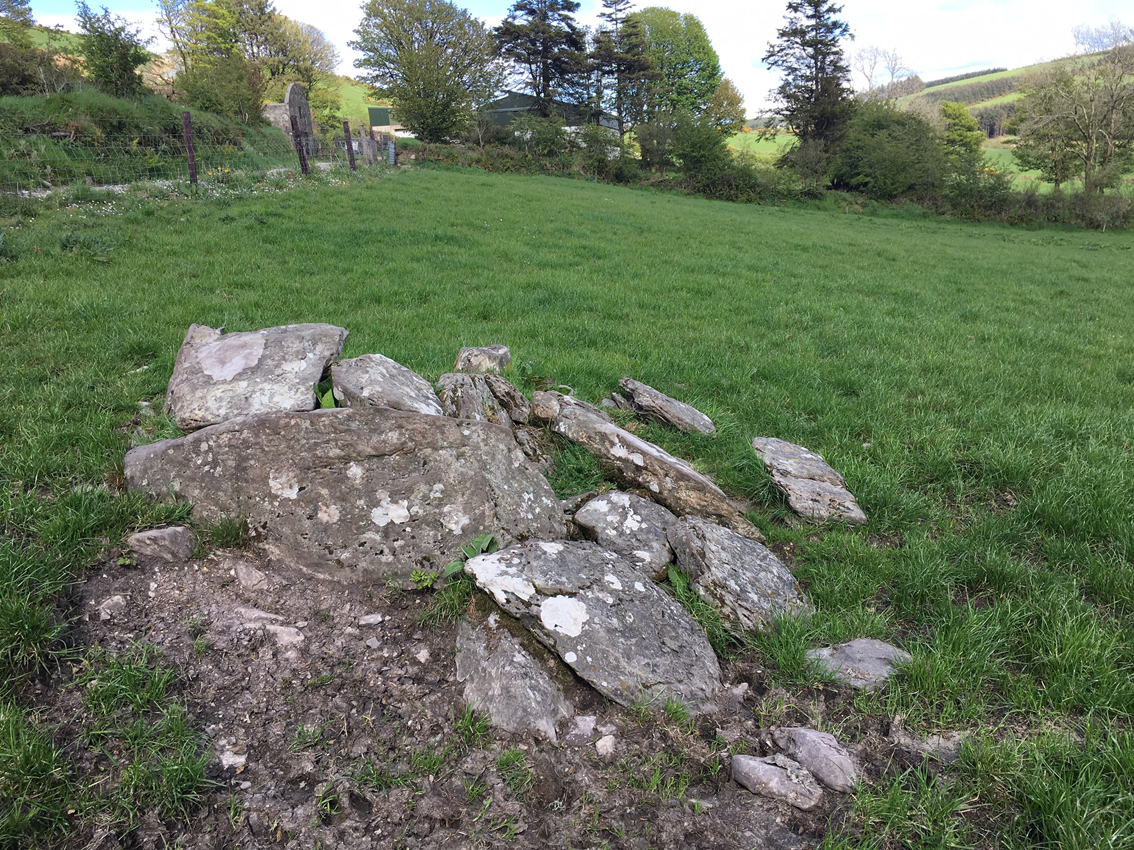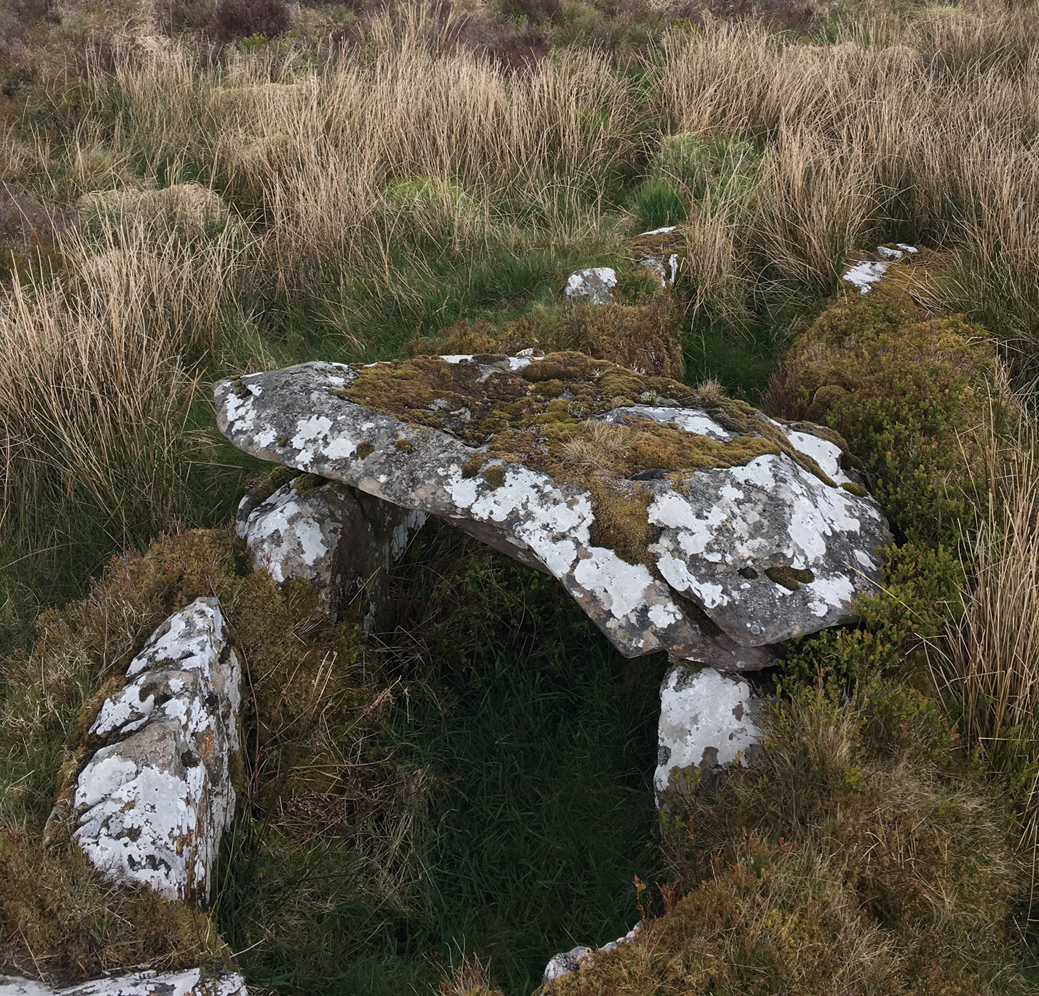
The front of the tomb. There may be a second, subsidiary chamber, in the clump of trees to the right. The hills in the distance are the Slieve Bearnagh mountains.

The front of the tomb. There may be a second, subsidiary chamber, in the clump of trees to the right. The hills in the distance are the Slieve Bearnagh mountains.

The wreckage at the back of the wedge tomb – I reckon some of it is field clearance.


Four stones are all that remain, one on the south side, two on the north side and the septal stone at the west. This view is south across to the Galty mountains.

Looking approx west along the filled in chamber of this long destroyed East Clare wedge tomb.

Probable septal stone at Cloongaheen West wedge tomb.

This is given the tentative classification of a wedge tomb. It’s in such a state of disrepair that only excavation could clear up the doubt. There are several more wedge tombs in the vicinity.

The collapsed mess at Killokennedy, set into the steep southern slope of the Slieve Bernagh mountains.

The remains of a house built on the northern side of the tomb, its southern gable presumably being the northern side of the chamber of the tomb.

The chamber sidestones have collapsed outwards and the roofstones have collapsed on top of them.

The roofstones are at the bottom of this pano. The view is across the Glenomra river valley towards the Galty mountains.

I’m surprised that these remains have survived.



Very ruined, this is the front of the tomb.

Commons? Crowlands? Crownlands? I’ve seen it called all three. The remains are 4.2 metres in length.

The tomb sits atop its own knoll. Including the portico, the tomb is 7 metres long.

Large, chunky stones at Knockcurraghbola Commons, including a massive septal stone, 2.3 metres long, half a metre thick and .85 of a metre high.


Kind of enigmatic, worth checking out if you’re in the vicinity wedge-tomb hunting.


Pano looking roughly south – the inventory entry calls this a pond barrow (see the miscellaneous entry). It’s marked as stones on the OS map.
This is from the Tipperary Archaeological Inventory:
Situated on the summit of a natural rise, close to the W edge of a gradual fall, overlooking a valley at the base of the slope. The site consists of a flat central area (14.3m N-S; 15m E-W) enclosed by a compact earthen bank (Wth 2.3m; int. H 0.35-0.55m; ext. H 0.18-0.35m), less visible at S. An entrance gap (Wth 3m) is visible at ESE. There is a small standing stone (TN039-011002-) in the interior in the SW sector with a second stone (TN039-011003-) standing at the entrance at ESE, in line with the outer edge of the bank.

The one remaining orthostat from the kerb of the cairn – ironically, it looks quite out of place.

The almost 4 metre deep court is on the left of this shot.

Detail of entrance jamb-stones. Almost all of the stones at Shanballyedmond are flag-like slabs.

From just inside the enclosure – that track up the hill is steeper than this shot portrays.

The excavated and partly restored court tomb at Shanballyedmond. It has its own enclosure with pathways and tended grounds and two information boards. Nice, if a tad overdone for the likes of us.

Baurnadomeeny standing stone, with the wedge tomb in front of the trees on the right.


South-west over the tomb entrance towards the Slieve Felim mountains.

There is something really special about this tomb entrance.


There is a cist within the impressive portico at Baurnadomeeny, visible here to the right.


This assemblage of stones is at the back of the tomb. The transverse stone is thought to be part of the outer walling and not the backstone of the chamber.

Mauherslieve (Mother Mountain) over one of the stones at the rear of the tomb.

Knocknabansha Hill in the distance has another wedge tomb near its summit.

The massive, 3.5 metres long septal stone at the front, western end of the tomb.

The back, eastern end of the remains. It seems the gallery has been removed and what remains is the outer walling of the wedge tomb.


I loved this site, from any angle, wild and windswept and rarely visited.

Looking down on the tomb from the large portico stone.



The chamber looked so cozy I fantasised about a tarpaulin and a waterproof sleeping bag (but not for long).

The one remaining chamber roofstone rests precariously on one of the northern sidestones.

Another view over the septal stone. The north-west side-walling is missing towards the front of the chamber.

Looking west over the roofstone towards Keeper Hill and the Silvermines.

The tomb is a bit of a mess, but still retains some of its ancient charm. This is the view from the west.